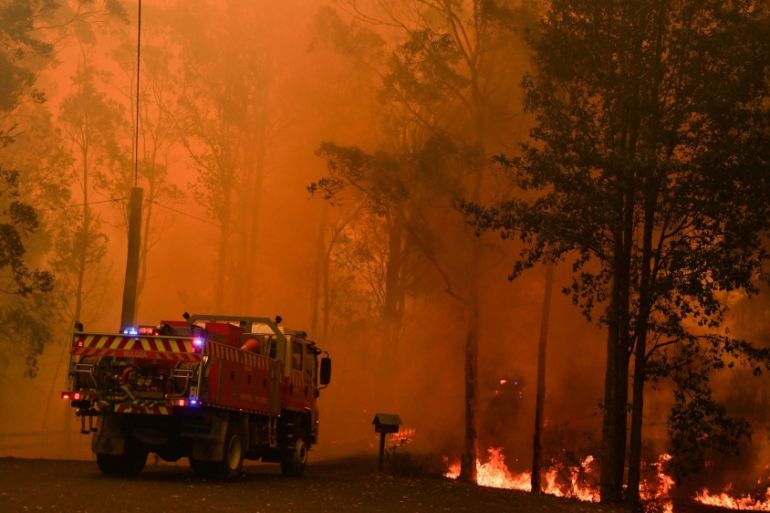From Evaluation to Action: Utilizing Your BAL Report to Mitigate Bushfire Ris
Navigating Shrub Fire Defense Regulations With BAL Report
In the world of residential property development and homeownership, browsing bush fire protection guidelines is paramount for making certain the security and compliance of structures in risky locations. Central to this undertaking is the Bushfire Assault Degree (BAL) report, an important paper that examines the prospective direct exposure of a residential or commercial property to bushfire. Understanding just how to apply the details and interpret included within a BAL report can substantially affect the style, building and construction, and upkeep of structures. By diving right into the intricacies of BAL analyses and their implications for developing conformity, stakeholders can proactively manage bush fire dangers and safeguard properties versus possible dangers.
Recognizing Bush Fire Defense Laws
To effectively browse the complexities of bush fire defense laws, it is vital to have a clear understanding of the controling standards and demands in position. Bush fire security policies are essential for protecting homes and lives in areas susceptible to bushfires. These policies develop the requirements and protocols that homeowner should comply with in order to reduce the threats related to bushfires.
/cdn.vox-cdn.com/uploads/chorus_image/image/66063681/GettyImages_1197451354.0.jpg)
Significance of BAL Evaluations
Understanding the significance of BAL evaluations is essential in making sure compliance with bush fire defense regulations and successfully minimizing the dangers linked with bushfires. BAL assessments, which figure out the Bushfire Strike Level of a property, are important for making suitable bush fire security actions tailored to the particular threat account of the site. By assessing variables such as vegetation type, range to potential fire dangers, and slope of the land, BAL analyses provide useful understandings right into the degree of risk a residential property encounters throughout a bushfire occasion.

Implications for Structure Conformity
Browsing via structure conformity needs in conformity with BAL analyses is vital for ensuring structures are effectively fortified versus the threats positioned by bushfires. Structure compliance refers to sticking to the requirements and policies established forth to improve the security and durability of buildings in bushfire-prone locations. The ramifications of building compliance in regard to BAL analyses are substantial. Frameworks that stop working to satisfy the needed compliance requirements are at a higher threat of enduring damages or devastation during a bushfire event. This not only threatens the occupants however also presents a threat to the surrounding setting.
Making sure building compliance involves cautious planning, building and construction, and maintenance to reduce the potential impact of bushfires. It requires an extensive understanding of the BAL rating assigned to the property and carrying out the proper actions to enhance its fire protection abilities.
Handling Shrub Fire Threats Efficiently
Offered the critical importance of structure conformity in strengthening frameworks against bushfire dangers, successfully handling these dangers needs a thorough method that prioritizes positive reduction strategies. Clearing combustible vegetation, creating defensible rooms, and guaranteeing proper upkeep can dramatically reduce the danger from this source of fire spreading out to the residential property. By combining these proactive measures, building proprietors can successfully handle bushfire risks and raise the safety of their passengers and structures.
Practical Tips for Homeowners and Developers
Properly managing bushfire dangers as a home owner or designer requires applying practical mitigation techniques customized to the residential or commercial property's particular susceptabilities and environments. Making certain that walls, roofs, and windows are created or updated to fulfill pertinent bushfire protection standards is vital.
Additionally, producing an emergency situation strategy and exercising discharge drills with family members participants, renters, or workers can conserve lives in the event of a bushfire. Remaining educated about neighborhood fire danger ratings, weather, and emergency notifies is likewise crucial for making timely decisions to protect life and property. Finally, engaging with local fire authorities, community groups, and experts experienced in bushfire monitoring can provide useful advice and support in establishing thorough bushfire defense approaches.
Verdict
To conclude, navigating bush fire protection policies with a BAL record is important for ensuring structure conformity and managing bush fire threats efficiently. Recognizing the significance of BAL analyses and following useful ideas can aid property owners and designers mitigate the impact of bush fires. By adhering to these laws and taking essential precautions, individuals can produce much safer settings on their own and their areas.
Trick parts of bush fire protection laws consist of the Bushfire Attack Level (BAL) evaluation, which identifies the degree of risk a property faces from bushfires. BAL assessments, which identify the Bushfire Assault Level of a residential property, are crucial for designing appropriate bush fire protection measures customized to the certain threat account of the site. By examining variables such as plant life kind, range to potential fire hazards, and slope of the land, BAL assessments supply useful understandings visit this site right into the level of threat a residential property encounters during a bushfire occasion.

In conclusion, navigating bush fire security guidelines with a BAL record is crucial for guaranteeing building conformity and taking care of bush fire threats effectively.